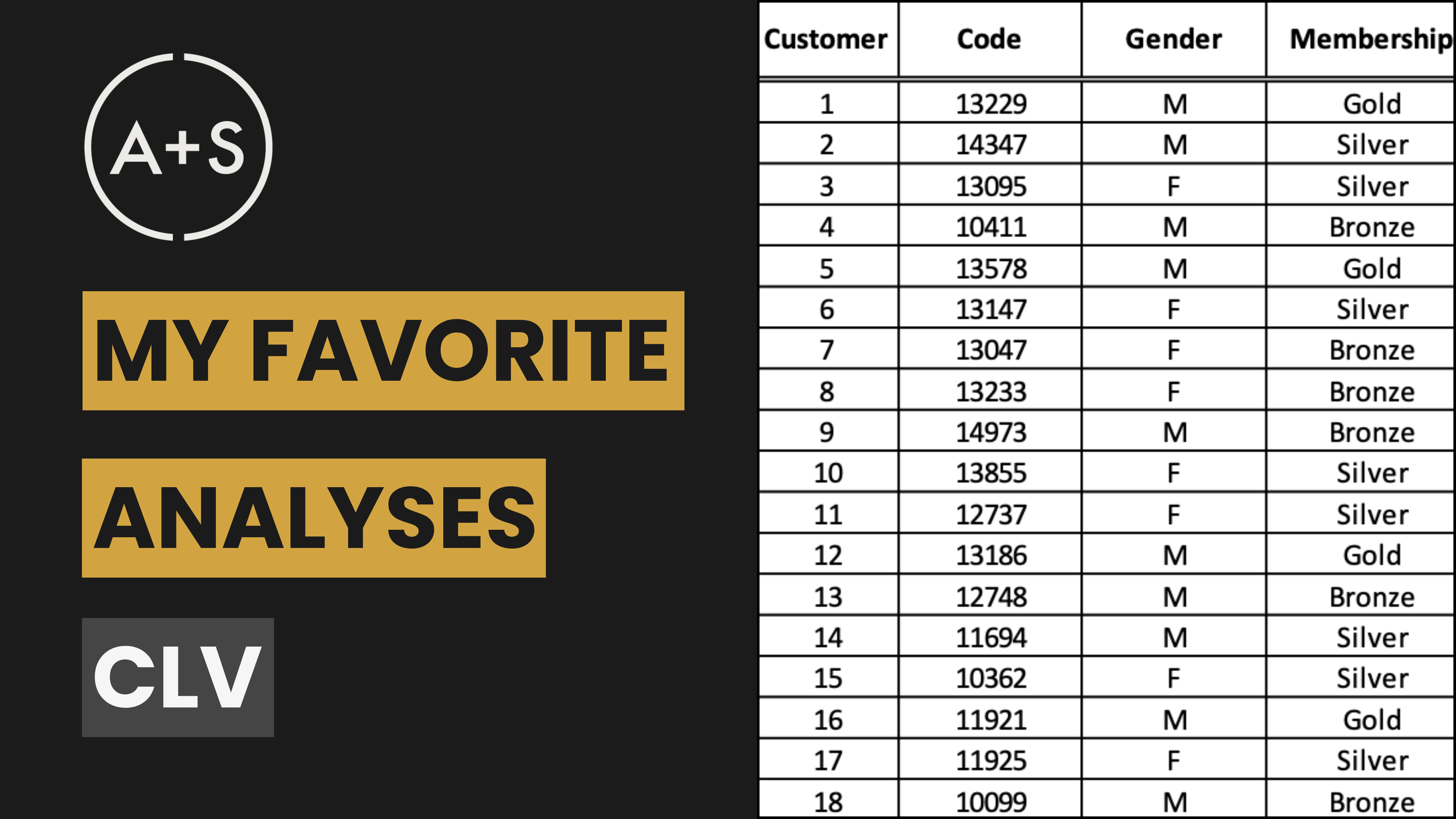Ensuring customer satisfaction (CSAT) is crucial for the success of any business, but the methods we use to measure it can be problematic. While surveys are valuable tools, relying on them can create obstacles to accurately assessing the real underlying factors that drive (or deter) customer satisfaction. In fact, putting too much weight on surveys can result in biased outcomes, incorrect conclusions, and bad business decisions.
Take Net Promotor Score (NPS), a metric designed to determine customer loyalty by asking the straightforward question: “On a scale of 0-10, how likely are you to recommend our brand to a friend?” This is followed by an important open-ended question, where respondents are asked to explain their score. It’s no wonder such a metric is attractive — it’s easy to understand, elegant, and appears to provide actionable insights.
However, as we have observed for many years, surveys are not always accurate. Surveys can be affected by things like social desirability bias, where respondents intentionally give a response they think the surveyor will view favorably, while holding a different belief in secret (2016 US presidential election polls, anyone?). Surveys are frequently misused — take the precarious and deeply demotivating position of Uber drivers who risk deactivation from the platform if their customer rating falls below 4.6 stars. And we’ve all become conditioned to respond positively to most surveys — we are bombarded with requests for feedback, but nearly always prompted to give top ratings — which triggers automatic responses that are detached from genuine feelings.
Indeed, the act of measuring CSAT is not as important as understanding the reasons behind the simple CSAT number. In essence, we must uncover the actions and experiences that lead to satisfaction scores. We must ask ourselves, “Why?” in order to truly comprehend the results.
A More Comprehensive CSAT Toolkit
A winning strategy for CSAT goes beyond ratings and reviews. It sidesteps the biases and deficiencies of surveys and hones in on observable, quantifiable actions that reveal a customer’s true sentiment. This requires analyzing objective metrics like repeat purchases, referrals, and engagement levels. Such observable actions express the result of customer loyalty and should be a centerpiece to any measurement strategy. But they are results and, as such, we must seek to understand the reasons behind these behaviors. Doing so requires a broad range of tools and techniques:
- Digital Signals: Analyzing micro-conversions on your website (such as product views, cart additions, and content downloads) to gauge how customers engage with your brand digitally.
- Employee Feedback: Recognizing that happy employees lead to happy customers, employee surveys can provide insight into how well your team is equipped to deliver great experiences.
- Voice Of The Customer: Analyzing customer conversations, reviews, and support interactions to understand what’s being said about your brand in real time.
Sources of data such as these provide insight into the underlying motivations behind surface CSAT scores and measurable results. Their true strength lies in linking these proactive, leading indicators with actionable steps. This is where Closed Loop Customer Feedback is critical. Beyond monitoring a score and recognizing a underlying challenge, the Closed Loop compels us to take action, make improvements, and demonstrate to your customers that their feedback is valued.
In the upcoming sections, we’ll explore more deeply into these key performance indicators and discuss ways to create a well-rounded, multi-faceted customer satisfaction strategy that does more than just gauge happiness — it produces tangible outcomes.
CSAT and Why It Matters
Before we can effectively measure customer satisfaction, it is important to have a clear understanding of what it actually means — and what it doesn’t. Essentially, CSAT measures how happy your customers are with a particular experience, product, or interaction with your brand. Typically, companies use surveys to gather this information by asking questions such as “How satisfied were you with your recent purchase?” or “On a scale of 1-10, how likely are you to recommend our product?”. These metrics help businesses gauge the level of satisfaction and loyalty among their customers. When done well, they’re clear, quantifiable, and provide a timely snapshot of customer sentiment. But does that snapshot truly reflect your customers’ behavior? The reality of CSAT is far more intricate.
The main focus of a CSAT strategy should be on understanding not just customers’ expressed thoughts, but also their resulting actions. Real measures of satisfaction and loyalty include repeat purchases, referrals, and brand engagement. These are tangible outcomes that have a direct impact on the business and should be valued by a company as much, if not more, than CSAT scores.
Critical Indicators and Metrics
To gain a comprehensive understanding of CSAT and customer behaviors, one must take into account an array of metrics that can be utilized to measure and interpret the level of satisfaction among customers.
Survey-Based Metrics: NPS and CES
When people think of CSAT, surveys are often the first thing that comes to mind. And it’s for a good reason — they provide direct feedback from customers. NPS is widely used to measure the likelihood of customers recommending a product or service, dividing them into promoters, passives, and detractors. Customer Effort Scores (CES) determines how easy it is for a customer to work with your brands — to resolve an issue, make a purchase, or access information. Minimizing customer effort can greatly impact loyalty.
Behavioral Indicators: From Retention to Digital Signals
The challenges of surveys require us to augment their responses with behavioral cues. These are the concrete steps customers take after their interactions — such as making repeat purchases, giving referrals, and actively participating — that demonstrate genuine satisfaction. Here’s how these measures are crucial:
- Retention and Customer Lifetime Value (CLV): By analyzing how long customers stick around and how much they spend over time, you can gauge the effectiveness of your retention efforts. A high CLV is often correlated with high satisfaction and loyalty, offering a quantitative way to track customer happiness.
- Digital Signals and Micro Conversions: In today’s digital world, tracking customer behavior on your website or app is invaluable. Micro-conversions, such as viewing a product, adding it to a cart, or sharing a page on social media, all provide data points about how customers interact with your brand. If a customer visits your site regularly but doesn’t make a purchase, that indicates a gap between interest and action — a gap that CSAT can help bridge.
Voice & Text Analysis: The Power of Real-Time Feedback
Truly understanding the Voice of the Customer (VoC) goes beyond simply taking their survey responses or measurable behaviors at face value. Diving into unstructured data like call transcripts, online reviews, and social media mentions, offers a view into the subtleties of customer sentiment. Thanks to advancements in AI and machine learning, it has become easier to identify recurring themes, pain points, and emerging trends that may not be evident in traditional survey results.
Employee Feedback: A Proxy for Customer Satisfaction
Employee feedback is an important aspect of the customer experience that is often neglected. Satisfied and engaged employees are more likely to provide exceptional customer experiences, making it crucial to monitor their satisfaction levels. By understanding how employees feel about their job and work environment, it can indirectly reflect on the level of customer satisfaction. When employees are content and equipped to do their jobs, it increases the chances of customers receiving top-notch service and having positive interactions.
Putting It All Together
The most effective CSAT measurement strategies take a multi-dimensional approach. While they start with survey-based feedback, they go beyond the surface to uncover the reasons behind customer behavior. By combining NPS and CES ratings with data on customer actions such as retention rates and digital interactions, and incorporating direct feedback from customers through voice and text, you can gain a comprehensive understanding of your customer base.
This all-encompassing method allows analysts to not only see what customers think and feel, but how those thoughts and feelings turn into actions that impact the business. As a result, you will be better equipped to identify areas for improvement, address customer needs effectively, and ultimately drive meaningful changes that increase satisfaction and loyalty among your customers.
Measuring Satisfaction Across Key Touchpoints
Now that we’ve familiarized ourselves with the various metrics used to gauge customer satisfaction, the next task is pinpointing the pivotal moments where these metrics should be applied. After all, a customer’s level of satisfaction cannot be generalized; it differs depending on the specific interactions and experiences. For example, a client may adore your product but struggle with your support system, or they may have an effortless purchasing experience but become frustrated when navigating your website. To accurately measure CSAT, it’s essential to monitor satisfaction at every significant touchpoint throughout the customer journey.
Identifying and Prioritizing Touchpoints
Ensuring customer satisfaction is a continuous process, not a one-time event. Every step of the customer’s journey — from discovering your brand and making their first purchase to interacting with support and their behavior after buying — offers a chance to gauge satisfaction levels and gain valuable insights. These are some key points throughout the journey where satisfaction is particularly important:
- Pre-Purchase & Purchase Stages: How customers experience your brand before buying can be as crucial as the purchase itself. Measure satisfaction with website usability, ad engagement, and checkout process. A simple friction point, like an unclear payment method or a slow-loading page, can significantly impact satisfaction and conversion.
- Post-Purchase Experience: Whether it’s shipping, onboarding, or the product’s initial use, the first impression post-purchase sets the tone for ongoing satisfaction. Ask questions like, “How satisfied were you with your delivery experience?” or “How easy was it to set up and start using your product?” Aim to understand if you met or exceeded customer expectations during this critical time.
- Support & Service Interactions: Customer service experiences can make or break customer satisfaction. Tracking how customers feel about their interactions with support teams — whether it’s through phone, chat, or email — can provide clear signals on where to improve. For instance, are customers experiencing long wait times? Is your chatbot resolving issues quickly, or is it causing frustration?
- Ongoing Usage & Loyalty: As customers continue using your product, their satisfaction will naturally fluctuate. Keeping tabs on how their feelings change over time is key to understanding what drives loyalty or causes churn. Regularly monitoring satisfaction through usage data (such as app engagement, repeat purchases, and subscription renewals) and open feedback channels ensures you’re aware of their evolving needs.
Matching Metrics to Touchpoints
Different touchpoints may require different methods of measurement. Knowing which metric is most appropriate for each touchpoint is essential in gathering meaningful information. Here’s how to match metrics with key touchpoints:
- Surveys for Immediate Feedback: Use CSAT and CES surveys to measure specific interactions, like support calls or delivery experience, where you want to gauge immediate customer sentiment. These quick surveys work well for touchpoints that are “in the moment” experiences and allow you to quickly react if something goes wrong.
- Behavioral Metrics for Deeper Insights: For touchpoints that are more complex or that unfold over time (like overall usage, customer journey on a website, or product experience), behavioral metrics like micro-conversions, session length, and feature usage provide a more comprehensive view. These metrics help analysts track what customers do, not just what they say.
- Voice & Text Analysis for Real-Time Understanding: Social media interactions, call center logs, and email inquiries can be analyzed through AI-powered topic modeling and sentiment analysis. This allows you to listen in real time to customer concerns, praise, and ideas. Monitoring these touchpoints provides a continuous pulse on customer satisfaction without the need for direct surveys.
Creating a Feedback Loop Across Touchpoints
Measuring satisfaction at each interaction point is crucial, but the true power of CSAT lies in incorporating these insights into a unified strategy. One touchpoint can affect another and a positive purchase experience may be overshadowed by a poor isolated experience at one point in the process. As consumers ourselves, doubtless we can all recount a positive brand experience that was soured by a bad experience with customer service (or some other touchpoint that was misaligned with the brand). It’s important to think about the bigger picture.
Developing a feedback loop ensures that you’re not just tracking individual touchpoints in isolation, but connecting them within the overall customer journey. If you notice a decrease in satisfaction after customers engage with support, how does that impact their likelihood to make future purchases? And if social media mentions become more positive after product updates, do you see a rise in NPS score? Use these connections to create a seamless experience and address any issues before they have a negative effect on overall customer loyalty.
The Key Takeaway here: Understanding satisfaction levels at each touchpoint allows you to pinpoint specific areas of friction and understand how they relate to one another. By selecting the appropriate metrics for each interaction and integrating your findings into a comprehensive view of the entire customer journey, you can uncover valuable insights that directly impact satisfaction and loyalty.
CSAT in Action: Making It Work for Your Business
Gaining insight into and quantifying customer satisfaction is only part of the equation. The true test – and potential for growth – lies in utilizing this knowledge to make positive changes. A comprehensive CSAT plan involves more than just gathering data; it involves using that data to make tangible improvements, bridge any gaps in customer experience, and foster stronger connections with your customers.
Step 1: Act on Customer Feedback
The most common mistake companies make when gathering customer feedback is failing to take action on it. To truly improve CSAT, it’s essential to have a Closed Loop Customer Feedback process in place. This involves collecting feedback from all touchpoints, analyzing it for insights, addressing customer-level challenges, and implementing changes to enhance the overall customer experience.
For instance, if survey responses indicate a decrease in satisfaction with delivery times, conduct further analysis to determine the root cause. Is it due to shipping delays, inaccurate delivery estimates, or packaging issues? Once the problem is identified, corrective measures can be taken such as working with logistics partners, adjusting estimates, or improving packaging.
Closing the loop not only involves fixing issues but also communicating with customers. When they see their feedback leading to meaningful changes, they feel valued and heard. This can turn neutral or detractor customers into promoters, increasing loyalty and satisfaction.
Step 2: Use Leading and Lagging Indicators Together
While traditional CSAT scores and NPS surveys are leading indicators that predict potential changes in loyalty and satisfaction, behavioral data like repeat purchases, referrals, and customer lifetime value (CLV) are lagging indicators that show how sentiment plays out over time and impacts business outcomes.
To fully utilize CSAT metrics, incorporate both leading and lagging indicators. For example, an increase in digital engagement and positive survey feedback may indicate a rise in repeat sales (a lagging indicator). Conversely, a decline in usage metrics and a lower NPS score could signal an immediate need to address something in the customer experience. This dual perspective allows for prioritizing actions based on both short-term needs and long-term goals.
Step 3: Turn Insights into Actionable Strategies
Insights gathered from CSAT metrics should guide strategies aimed at enhancing the customer experience. If speed and efficiency are important to customers, consider streamlining support channels by offering live chat or automated responses for common issues. If social listening reveals a preference for personalized communication, invest in data-driven personalization tools to customize emails, offers, and product recommendations.
Take a holistic approach to these strategies by considering all touchpoints, not just one. For example, if employee feedback indicates that support teams struggle with complex inquiries, this is not just an internal issue but also a customer experience problem. Providing additional training, better tools, or clearer processes can improve both employee satisfaction and the overall customer experience.
Step 4: Measure the Impact of Changes
Continuously measuring the impact of changes on CSAT and business outcomes offer important insights. Are there improvements in NPS, CES, or other survey scores? Have changes in support protocols led to higher repeat purchases or reduced service tickets? Close the feedback loop by assessing how changes have improved customer satisfaction across various touchpoints.
A/B testing can be helpful in comparing the effects of different strategies or solutions on satisfaction scores and behaviors. This allows for refining approaches based on data and making informed decisions that genuinely enhance the customer experience.
In Conclusion: Seek Understanding, Not Just Satisfaction
Truly satisfying your customers goes beyond just meeting targets or achieving high scores. It requires a deep understanding of their needs, expectations, and overall experiences. Instead of solely aiming for a top score, strive to unravel the reasons behind those ratings. By focusing on what truly drives satisfaction and loyalty at every interaction, and taking actionable steps based on that knowledge, you can craft meaningful experiences that not only elevate scores but also foster lasting customer relationships. Keep in mind, customer satisfaction is merely the beginning; comprehension is the crux of long-term success.




